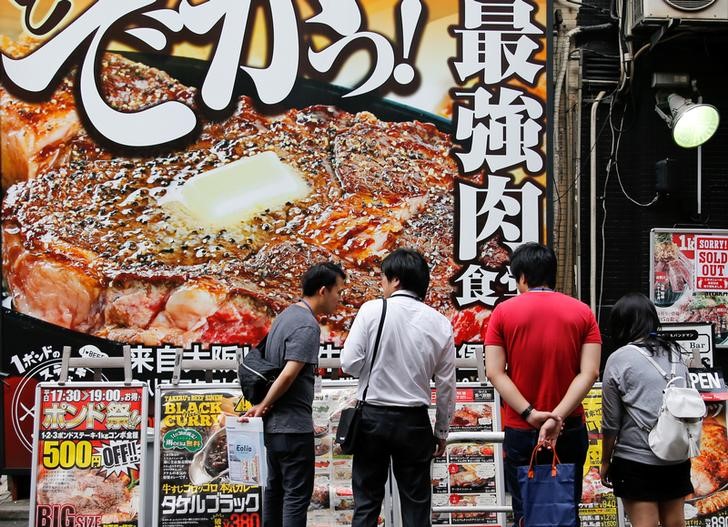Japan CPI inflation remains sticky in March as BOJ meeting looms

JP225
+0.07%
Add to/Remove from Watchlist
Add to Watchlist
Add Position
Position added successfully to:
Please name your holdings portfolio
Type:
BUY
SELL
Date:
Amount:
Price
Point Value:
Leverage:
1:1
1:10
1:25
1:50
1:100
1:200
1:400
1:500
1:1000
Commission:
Create New Watchlist
Create
Create a new holdings portfolio
Add
Create
+ Add another position
Close
USD/JPY
-0.08%
Add to/Remove from Watchlist
Add to Watchlist
Add Position
Position added successfully to:
Please name your holdings portfolio
Type:
BUY
SELL
Date:
Amount:
Price
Point Value:
Leverage:
1:1
1:10
1:25
1:50
1:100
1:200
1:400
1:500
1:1000
Commission:
Create New Watchlist
Create
Create a new holdings portfolio
Add
Create
+ Add another position
Close
By Ambar Warrick
Investing.com— Japanese consumer price index inflation was unchanged in March from the prior month, remaining well above the Bank of Japan’s target range as government subsidies had a limited effect in bringing down price pressures.
National core consumer price index inflation, which excludes volatile items such as fresh food, rose 3.1% in the 12 months to March, data from the Statistics Bureau showed. The figure was in line with estimates that core inflation would remain steady from February.
Including fresh food prices, national CPI inflation grew 3.3% in March, in line with expectations for growth of 3.2% and slightly lower than the prior month’s reading of 3.3%.
The reading indicates that while government subsidies on electricity helped bring down inflation from an over 40-year peak of 4.2%, the rising cost of most other amenities still kept inflation well above the Bank of Japan’s 2% target rate.
Food prices continued to trend higher, as did prices of gas and household goods.
Friday’s reading comes ahead of a Bank of Japan meeting next week, where the bank is widely expected to maintain its ultra-loose policy under new head Kazuo Ueda. But recent media reports signaled that the BOJ is open to tightening policy later this year if wage growth maintains its current momentum.
The BOJ also forecast a pick-up in inflation by mid-2023, as the effects of the government subsidies are baked into the economy. This is likely to push the bank into altering its yield curve control policy later in the year, with some analysts expecting an end to the policy.
High inflation has battered Japan’s economy since late-2022, as rising input costs saw local manufacturers cut output. Consumer discretionary spending also slowed due to a higher cost of living.
Commodity market disruptions caused by the Russia-Ukraine war, coupled with increased spending after the lifting of anti-COVID measures in mid-2022 were the biggest factors behind higher Japanese inflation.
A weak yen, due to a dovish BOJ, also factored into higher import prices.
But the BOJ has so far largely maintained its ultra-accommodative stance, citing the need to support economic growth after nearly three years of COVID-driven disruptions.
Japanese manufacturers also have to cope with a slowdown in overseas demand for goods, amid worsening economic conditions across the globe.




